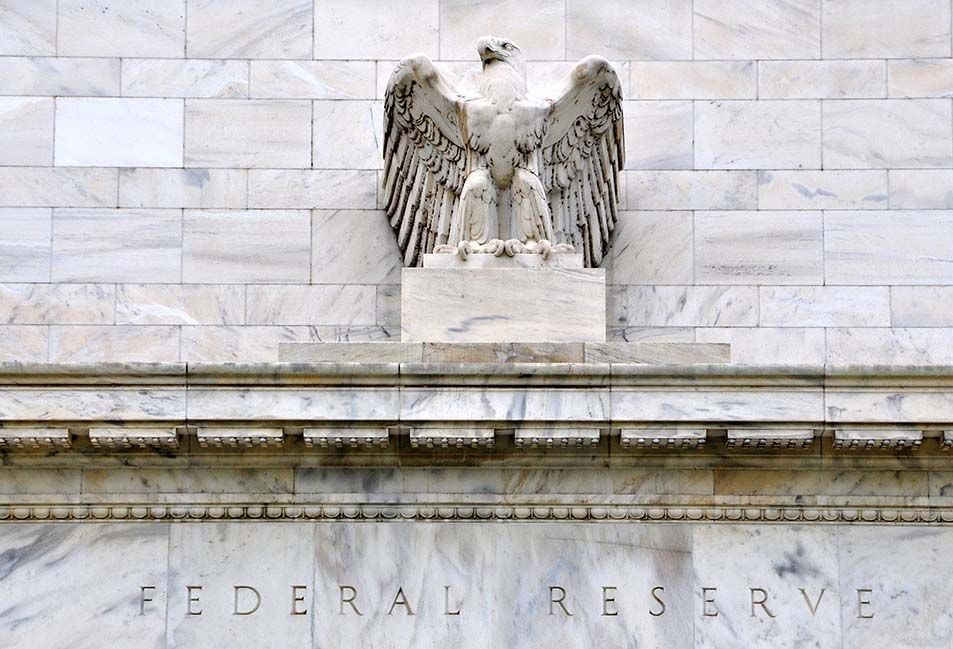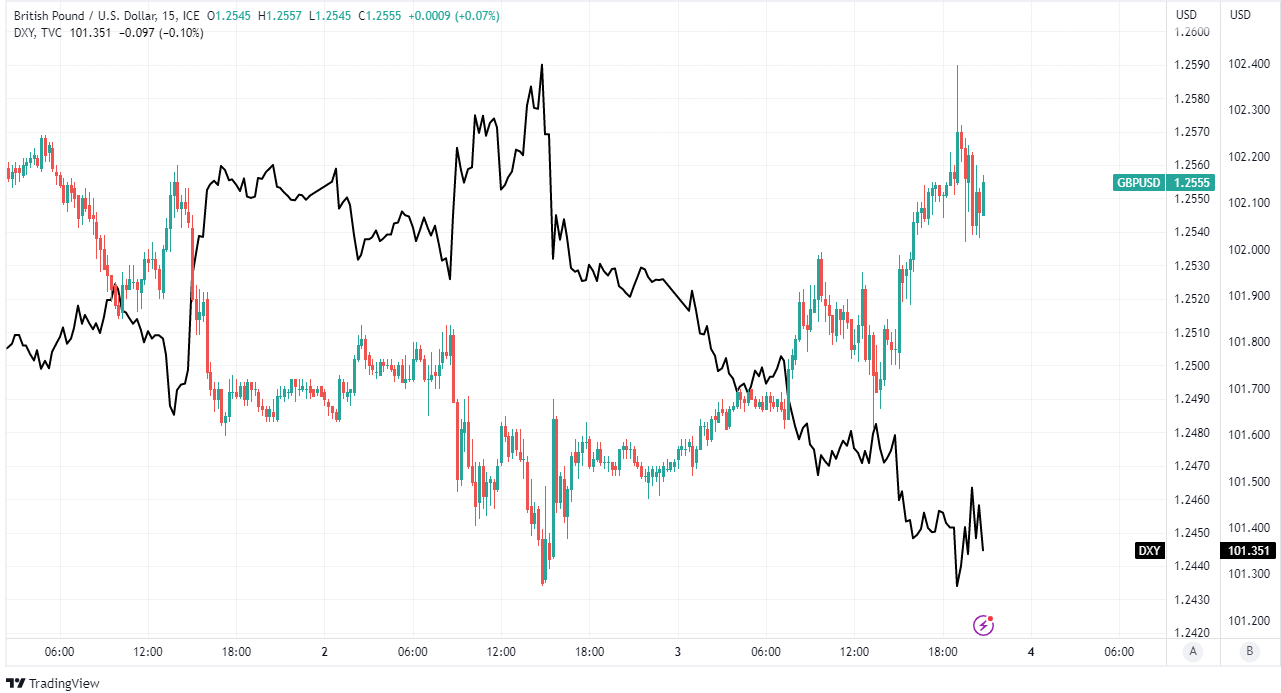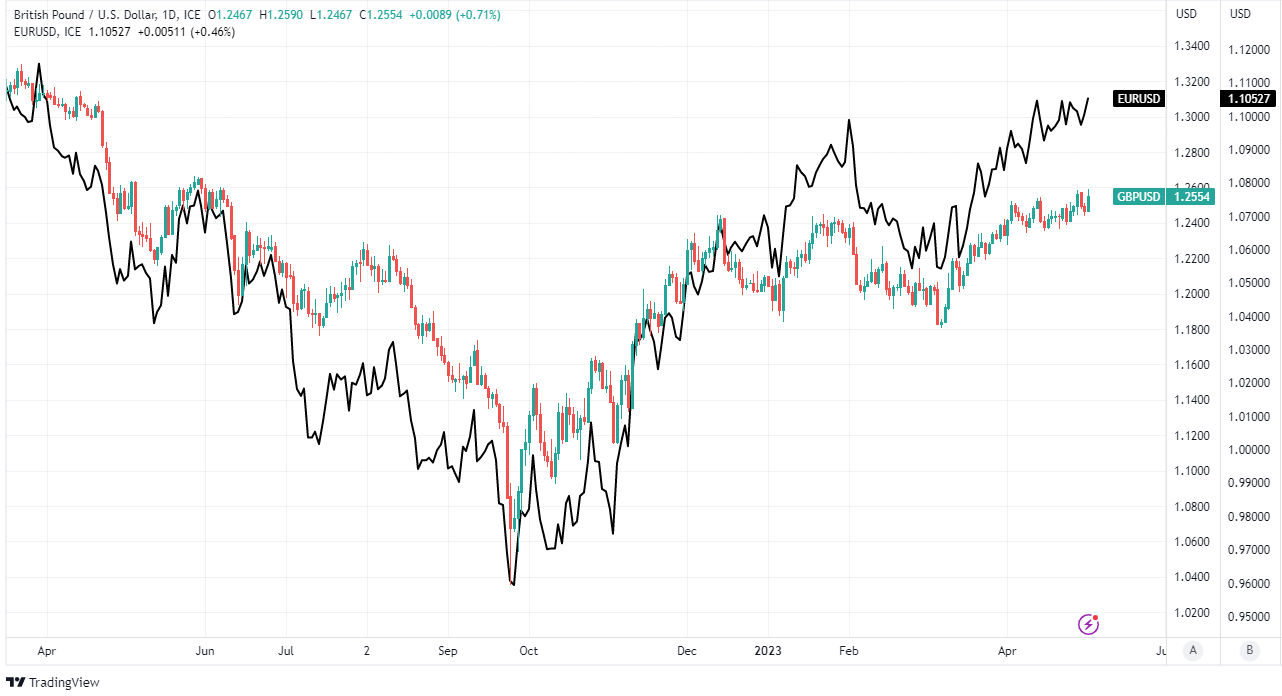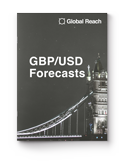GBPUSD Reaches New High as Fed Delivers its Final Hike
- Written by: James Skinner, Contributions from Gary Howes
- Fed

Image © Adobe Stock "
The Pound to Dollar exchange rate almost touched 1.26 late in midweek trade after the Federal Reserve (Fed) raised its interest rate but stopped short of suggesting that further increases are likely to be announced over the coming months.
Dollar rates were already lower across the board on Wednesday but losses deepened as the Fed matched market expectations by raising the Federal Funds rate range a quarter of a percent to between 5% and 5.25%.
New language in the statement did not rule out further increases for later in the year but did indicate uncertainty on the Federal Open Market Committee about the extent to which these would be necessary to bring inflation back to the 2% target.
"A decision on a pause was not made today. You will notice in the statement for March we had a sentence that said the committee anticipates that some additional policy firming may be appropriate. That sentence is not in the statement anymore. We took that out," Chairman Jerome Powell told reporters in a subsequent press conference.
"Instead we are saying that in determining the extent to which additional policy firming may be appropriate, the committee will take into account certain factors," he added.
Above: Pound to Dollar rate shown at 15-minute intervals alongside U.S. Dollar Index.
GBP to USD Transfer Savings Calculator
How much are you sending from pounds to dollars?
Your potential USD savings on this GBP transfer:
$318
By using specialist providers vs high street banks
The Pound to Dollar exchange rate rose to a high of 1.2590 on Wednesday and remains near this level on Thursday as the previous day's moves are held.
"The US dollar has continued to trade at weaker levels during the Asian trading session following last night’s latest FOMC meeting. It has resulted in the dollar index moving back to within touching distance of the year-to-date low of 100.79 from last month. The pound and Swiss franc have already risen to fresh year-to-date highs against the US dollar," says Lee Hardman, Senior Currency Analyst at MUFG.
The Fed's statement suggests a lot now depends on whether recent declines in inflation persist for long enough to persuade policy makers that its 2% target is in the pipeline.
"I think slowing down was the right move. I think it's enabled us to see more data and it will continue to do so," Chairman Powell said in the press conference.
To optimise the timing of international payments you could consider setting a free FX rate alert here.
"We always have to balance the risk of not doing enough, and not getting inflation under control against the risk of maybe slowing down economic activity too much. And we thought that this rate hike along with the meaningful change in our policy statement was the right way to balance that," he added.
U.S. Consumer Price Index inflation fell from 6% to 5% in March but edged higher from 5.5% to 5.6% after energy and food prices are overlooked, data released in April showed.
Meanwhile, data out on Friday suggested the Fed's preferred measure - the Personal Consumption Expenditures (PCE) inflation rate - fell from 5.1% to 4.2% in March but stopped at a higher level of 4.6% if changes of energy and food costs are set aside.
Each of these inflation rates has fallen meaningfully since late last year but most recently declines in the more closely watched measures of core inflation have almost stalled.
Above: Pound to Dollar rate at daily intervals with EUR/USD. Click the image for closer inspection.
GBP/USD Forecasts Q2 2023Period: Q2 2023 Onwards |
"We have seen inflation come down and move back up two or three times since March of 2021," Chairman Powell told reporters on Wednesday.
"So I think you're going to want to see that, you know, that a few months of data will persuade you that you have got this kind of thing right. We have that luxury, we have raised 500 basis points. I think that policy is tight," he added.
However, in what was potentially a flash of light at the end of the inflation tunnel, the PCE data released by the Bureau of Economic Analysis last Friday showed inflation in the services sector halving to just 0.2% and a level consistent with a little more than 2% on an annual basis in March.
This was even as other data showed labour costs increasing strongly, and matters because the Fed has previously identified the services sector as an important driver of its forecasts for overall inflation, hence why any further signs of subdued price pressures there could lead the Fed to leave interest rates unchanged at the coming meetings.
Softening services sector inflation also appeared to be confirmed by the Institute for Supply Management (ISM) on Wednesday after its the price index component of the Services PMI rose by just 0.1% for April; a level that would leave services inflation running at a little more than 1% annually if sustained for longer.
"The Committee’s assessments will take into account a wide range of information, including readings on labor market conditions, inflation pressures and inflation expectations, and financial and international developments," the Fed said in its statement on Wednesday.







